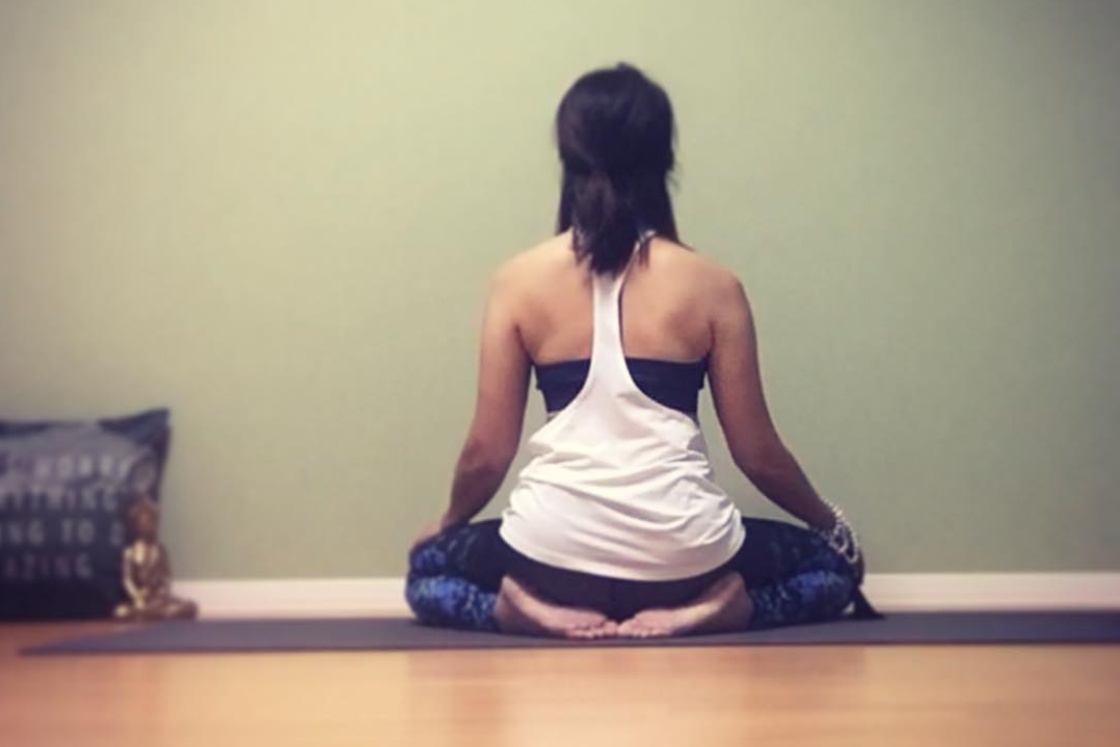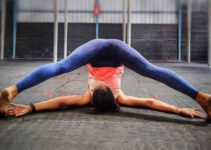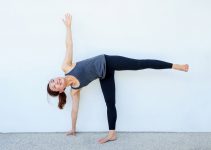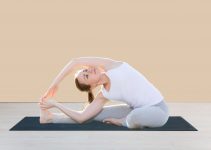
Bhadrasana is a sitting meditative asana. It is considered for its groundedness and relaxing effect while sitting for a longer duration.
In Bhasya’s commentary on Yoga Sutras of Patanjali (YSP), Bhadrasana is recommended one among 12 seated postures for meditation.
The Bhadrasana is one that in which sitting man places soles of both feet joined together below the testicles and places both hands with the finger interlaced over that region.
Bhaysa Commentry on YSP
However, in other texts, Bhadrasana is pictured as Baddha Konasana (Bound Angle Pose). But actually Bhadrasana is the base pose from which Baddha Konasana can be derived.
This asana can be easily practiced without bringing some advanced transformation in a normal sitting posture. Therefore, beginners can go for Bhadrasana enthusiastically.
Meaning
Bhadrasana is a Sanskrit term, which on translated in English becomes ‘Bhadra‘ means ‘Gracious & Blessed‘ and ‘asana‘ means ‘posture‘.
Therefore, Bhadrasana is a posture that maintains the graciousness in the seeker even after sitting for long periods in Meditation.
Some of the ancient texts such as Hathratnavali and Gheranda Samhita has mentioned Bhadrasana. According to Swatmarama, the honorable author of Hatha Yoga Pradipika, emphasis it as the four best asanas for meditation.
Push the navel against the spine a hundred times…
The practice can be done standing or sitting in Bhadrasana that assists ‘Agni Sara Kriya‘.
– Gheranda Samhita 1:19
Bhadrasana Practice Guide
To practice Bhadrasana in an ideal manner one should go through well-defined indications.
Precautions & Contraindications
- People suffering from arthritis should refrain themselves from doing this asana as it might severe condition on prolong sitting still in Bhadrasana.
- Avoid practicing this asana in a condition of the sciatic nerve. Because compression over a longer duration could cause serious damage.
- Practitioners with stiffened lower body specifically beginners go with ease and avoid straining as if the hip joint is not flexible as required.
- People with tenderness, misalignment, swelling, and pain should avoid practicing this asana as it might worsen the condition.
Preparatory Poses
- Hero Pose (Veerasana)
- Thunderbolt Pose (Vajrasana)
- Tree Pose (vriksasana)
- Reclining Hand-to-Big-Toe Pose (Supta padangusthasana)
Bhadrasana Steps
- First of all, come into Vajrasana (Thunderbolt Pose) on your mat. Now, separate the knees apart as far as possible.
- Spread the feet and drop the buttocks and perineum to touch the floor, make sure toes remain in contact throughout dropping.
- Place your hand on both knees and try to spread a bit more in order to place your perineum right in the middle of the feet.
- Adjust and relax here while keeping the back erect and grab the toes from behind so as to get comfortable with the posture (if possible).
- Now, try to focus your eyesight at the nose tip (Nasikagra Drishti). If experience strain for a long time then close your eyes and maintain the posture.
Props and Modification
- Practitioners can use a folded blanket underneath their hip in the alignment to the backbone. This will assist in balancing the posture.
- It would be difficult to hold the posture too long for practitioners with weakened back. So, it’s better to take wall support to remain in Bhadrasana.
- People with stiffened inner thigh and hip muscles avoid overspreading of knees because it could result in strain or sprain in concerning body parts.
Variations
Bhadrasana has two variation.
1. Gorakshasana
In this pose, feet position slightly changed from Bhadrasana.
- Begin with the Dandasana. Now, draw the feet inward and place the sole of the feet together, touching each other.
- After holding the feet raise the heels from the floor, balls of soles remain in contact with the floor and bend the toes.
- Now, set your palms on the alternate heel. Close your eyes and maintain the posture.
2. Moola Bandha Asana
Mool Bandha asana is the advance variation of Bhadrasana.
- Begin with Dandasana. Afterward, bring your feet inward and sole together as in Gaurakshasana.
- Now, try to sit on your while keeping them together. Heels pressing the anus, sides of the feet pressing the perineum or vagina and toes pointing out in front of the body.
- Close eyes and maintain the posture. This variation demands a supple ankle due to such advancement. Beginners avoid this asana.
Bhadrasana Benefits
- In men, Practicing Bhadrasana induces a Mula bandha, which stretches the muscles of the pelvic floor. This improves blood circulation and helpful in spermatorrhea (excessive, involuntary ejaculation), prevents inguinal hernia, and controls testosterone secretion.
- Moreover, induced Moola Bandha also vitalizes the sexual energy that results in improved fertility and libido.
- Bhadrasana with wall support can be practiced in the second trimester of the pregnancy [efn_note] Relevance of yoga and ayurvedic dietary regimen during pregnancy http://www.theyogicjournal.com/pdf/2018/vol3issue1/PartV/3-1-241-327.pdf [/efn_note]. This may help in lengthening and strengthening the pelvic floor which could assist in a smooth delivery.
- Menstrual issues [efn_note] Yoga Therapy – an Effective Solution for Menopausal Problem http://www.ijsc.net/docs/issue4/yoga-therapy-effective-solution-for-menopausal-problems.pdf [/efn_note] like Dysmenorrhea, cramps, excessive pain, etc could be the reason for psychological and physiological imbalances. Bhadrasana rushes fresh oxygen-rich blood in the uterine region, which results in relief and overcoming concerning issues.
- Valves govern the flow of blood in veins but aging weakened them and cause blood to accumulate at a specific position. This results in vein enlargement or varicose veins. So, Bhadrasana enhances the blood flow in those regions and overcomes the condition.
- The regular practice of Bhdrasana results in certain changes in the nervous system and blood. This soothes the mind and boosts positive feelings & improves the serotonin level. Serotonin can cross the blood-brain barrier and helps in mood elevation. Therefore, overcome stress and anxiety.
- Bhadrasana with moola bandha redirects the body energy towards the perineum, which is the seat for the Mooldhara chakra. So, appropriate and regular practice with deep breathing results in the activation of the Root chakra.
- This asana increases the blood circulation to the lower body including the abdominal region. However, erected back also relaxes the digestive organs. This simultaneous assistance enhances digestive functioning and helps in piles as well.
- It improves the mobility of joints including the knee, ankle, sacral, hip, and helps in the loosening of the inner thigh and buttock muscles. Also assists in the opening of hip abductor muscles.
- As a still posture, it provides the lungs to become inflated fully. This improves the functioning and overcomes concerned issues.
- Enhanced blood circulation to the brain results in stimulation of the hypothalamus gland which in turn activates other glands of the body via chemical messenger (Hormone).





Really yoga and Ayurveda are amrit for longevity, health wealth, and happiness joy to us
Also it stands for wellness